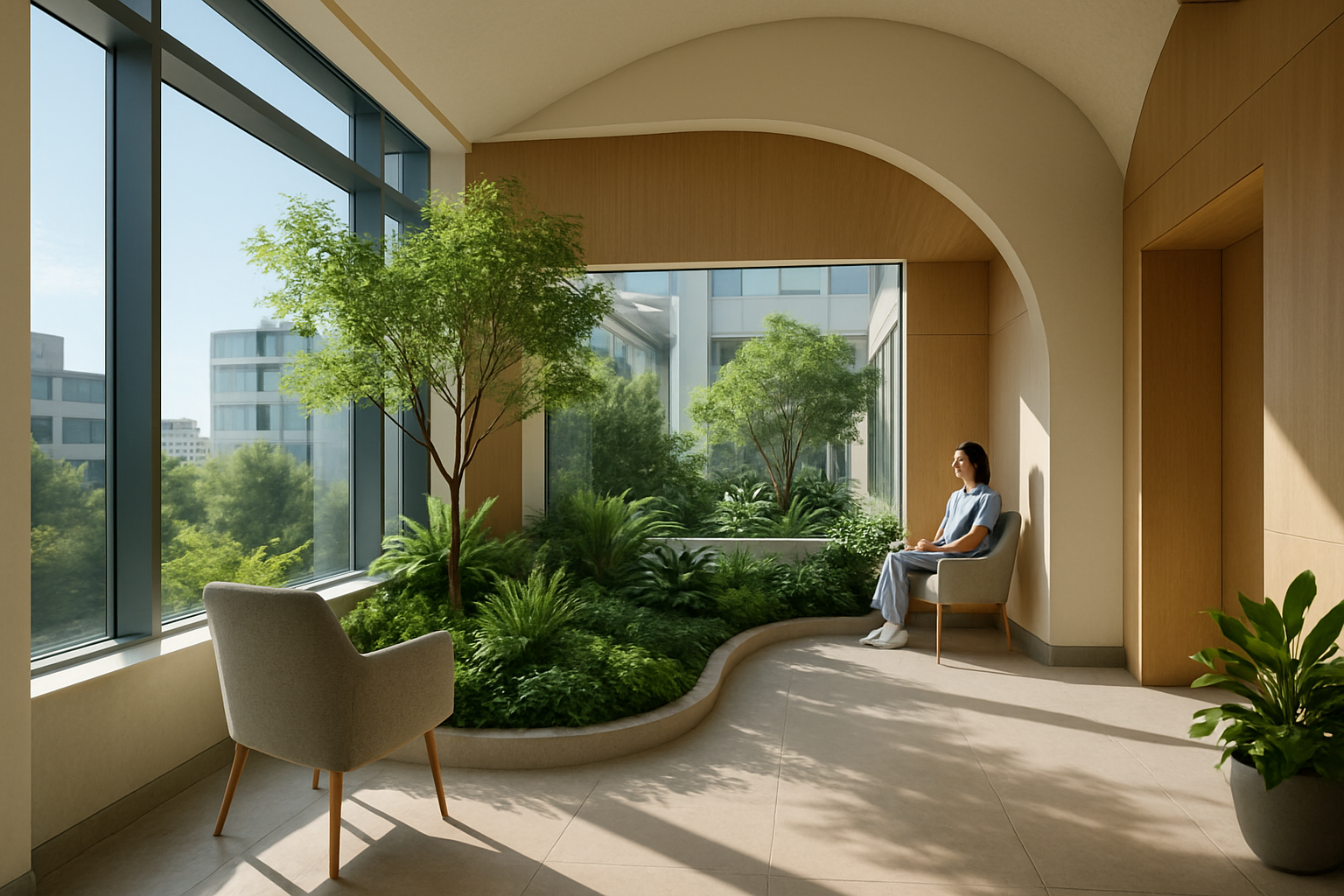Leveraging Biophilic Design in Industrial Spaces
Maximizing employee well-being and productivity in industrial settings through nature-inspired design principles. This innovative approach merges the traditionally stark industrial environment with elements of nature, creating a more harmonious and efficient workspace.

Historically, industrial spaces have prioritized function over form, focusing solely on maximizing output and efficiency. This approach often resulted in stark, uninspiring environments that paid little attention to worker comfort or well-being. As our understanding of the impact of workspace design on productivity and employee satisfaction has evolved, so too has the potential for reimagining industrial spaces.
The Science Behind Biophilic Design
Research in environmental psychology and occupational health has consistently demonstrated the positive effects of exposure to natural elements on human well-being and cognitive function. A landmark study by Roger Ulrich in 1984 showed that hospital patients with views of nature recovered faster and required less pain medication than those facing brick walls. This finding sparked a wave of research into the benefits of natural elements in various built environments.
In industrial settings, where workers often spend long hours in enclosed spaces, the potential benefits of biophilic design are particularly significant. Studies have shown that incorporation of natural elements can lead to reduced stress levels, improved cognitive function, and increased job satisfaction among employees. These benefits translate directly into tangible outcomes for businesses, including reduced absenteeism, lower turnover rates, and increased productivity.
Practical Applications in Industrial Spaces
Implementing biophilic design in industrial settings requires a thoughtful approach that balances aesthetic considerations with practical constraints. Some effective strategies include:
-
Natural Lighting: Maximizing the use of natural light through strategically placed windows, skylights, or light tubes can significantly improve the work environment. In areas where direct sunlight is not feasible, full-spectrum lighting that mimics natural light can be employed.
-
Green Spaces: Incorporating indoor plants or creating outdoor green areas for breaks can provide employees with much-needed connection to nature. Vertical gardens or green walls can be particularly effective in spaces with limited floor area.
-
Natural Materials: Using wood, stone, and other natural materials in construction and finishes can create a more organic feel within the industrial space. These materials can be incorporated in ways that do not compromise the durability and functionality required in industrial settings.
-
Water Features: The sound and sight of moving water can have a calming effect. Small fountains or water walls can be strategically placed in break areas or entrances to create focal points of natural beauty.
-
Biomimicry in Design: Incorporating patterns and forms found in nature into the structural design of the facility can create a more harmonious environment. This can include elements like honeycomb-inspired storage systems or leaf-like solar panels on the roof.
Overcoming Implementation Challenges
While the benefits of biophilic design in industrial spaces are clear, implementation can present several challenges. Safety considerations, regulatory compliance, and budget constraints are often cited as barriers to adoption. However, innovative approaches can help overcome these obstacles.
For instance, safety concerns regarding the use of water features or indoor plants can be addressed through careful design and maintenance protocols. The initial cost of implementing biophilic elements can be offset by the long-term benefits of increased productivity and reduced employee turnover. Moreover, many biophilic design elements, such as improved natural lighting, can lead to reduced energy costs over time.
Case Studies: Success Stories in Industrial Biophilia
Several forward-thinking companies have already begun to reap the benefits of biophilic design in their industrial facilities. A large automotive manufacturer in Germany incorporated a “green lung” - a central atrium filled with plants and natural light - into their production facility. The company reported a 15% increase in productivity and a significant reduction in workplace accidents following the redesign.
In another example, a pharmaceutical manufacturing plant in Singapore integrated extensive green spaces and natural lighting into their facility design. The company saw a 20% reduction in absenteeism and a marked improvement in employee satisfaction scores within the first year of operation in the new facility.
These success stories highlight the tangible benefits that can be achieved through thoughtful integration of biophilic design principles in industrial settings.
Key Strategies for Implementing Biophilic Design in Industrial Spaces
• Conduct a thorough assessment of your current space to identify opportunities for natural integration
• Prioritize natural lighting through windows, skylights, or light tubes
• Incorporate indoor plants or create outdoor green spaces for employee use
• Use natural materials like wood or stone in construction and finishes where practical
• Consider water features in common areas to create calming focal points
• Implement biomimetic design elements that mimic natural forms and patterns
• Engage employees in the design process to ensure the changes meet their needs and preferences
• Partner with experts in biophilic design to develop a comprehensive, tailored strategy
• Monitor and measure the impact of biophilic elements on productivity, safety, and employee satisfaction
• Continuously refine and adapt the design based on feedback and observed outcomes
A New Frontier in Industrial Design
The integration of biophilic design principles into industrial spaces represents a significant opportunity for businesses to improve their operations, enhance employee well-being, and demonstrate environmental leadership. As more companies recognize the potential benefits, we can expect to see a shift towards more nature-inspired industrial environments. This evolution not only promises to improve the day-to-day experience of industrial workers but also to drive innovation and sustainability in industrial design. By harmonizing the built environment with natural elements, businesses can create more productive, efficient, and human-centric industrial spaces for the future.





